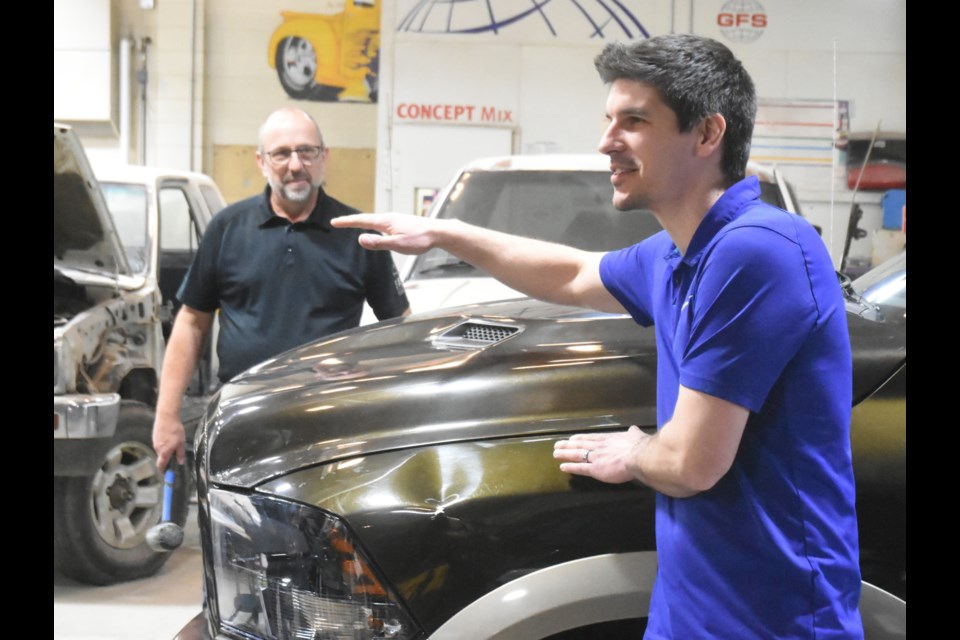MOOSE JAW — Mechanics who remove dings and dents from vehicles typically use one method to make repairs, but a recent conference showed some technicians another option that’s less damaging to surfaces.
The Saskatchewan Association of Automotive Repairers (SAAR) held its two-day spring conference and banquet in Moose Jaw recently, which attracted dozens of repair technicians from across the province.
One session, called “glue pull training,” occurred in A.E. Peacock Collegiate’s automotive shop and was led by Colour Compass Corporation (CCC) in Edmonton. The session also enabled some autobody students to watch and go hands-on.
Terry Beattie, president of SAAR and owner/operator of LB Beattie Autobody, explained that a repair technique used heavily in the past saw technicians sand or grind off paint from a damaged area and weld a metal tab onto the panel to pull out the dent. However, this created other problems that affected the panels’ structural integrity.
The materials used to make vehicles today are weaker than in the past, so they can’t always handle this technique, he continued. So, the “glue pulling” method sees technicians glue onto the surface plastic tabs with hooks and then pull out the dent with various tools.
“This is less invasive,” Beattie added.
Stefano Liessi, the training and curriculum co-ordinator with CCC, said this method keeps the original paint in place, reduces the work area, makes for a more efficient, cleaner and healthier repair and reduces the chances of something going wrong. This method is also versatile and flexible and can be used on large and small repairs.
The glue-pulling method has been around for roughly 12 years, but it’s taken off in the last five years due to more research and development, he continued.
“They’ve really honed in on the benefits of it and they’ve really managed to polish it to a point where it’s reliable and good,” Liessi remarked.
This is a great method to teach new students, especially high school youths, since they will have that experience when they start working after graduation, he said. Some repair practices are still “very old school,” but those are fading away since new ideas are replacing them.
“The sooner you can teach someone the newer methods, the better off you’re going to be in industry,” Liessi added.
Kaleb McCrystal, a Grade 12 autobody student at Peacock, attended the seminar because it was not something he regularly saw and would likely never see again — unless he joined the trades.
“It was … a once-in-a-lifetime thing … (and) a good experience to learn it all,” he said, adding his goal is to become a power engineer after graduation.
Amara Davidson, another autobody student, said it was interesting to learn about the technique since it is the future of the industry. Even if she didn’t pursue this field, it was still good for her to know how today’s technicians repair vehicles.
The autobody class teaches students about dent-pulling, welding and body-filling, but nothing as extensive as glue-pulling, she added.
Charlie Matus, 64, from Candle Lake, has been in the automotive repair industry for 47 years and said the glue-pulling technique was new to him.
“Our trade is all about new technology (because) it’s always changing and always growing,” he said. “And if you don’t stay on top of it … then you’re behind.”
Matus added that he is always learning something new about his craft, even after being in the industry for nearly five decades.
Liessi, who has worked in the industry for 40 years, said it has been incredible to see an evolution in repair methods, especially since vehicles contain more technology and technicians are forced to adapt how they fix them.
“Vehicles are built much better today. The repairs are done much better today. Technicians have access to all kinds of information that we never had when I was on the floor,” he added. “The world’s a different place.”




